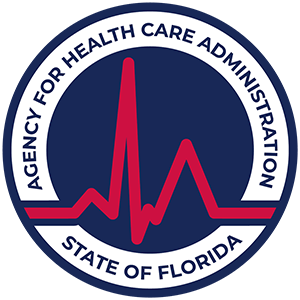What is Substance Use Treatment?
Discover substance use treatment: from medications to tailored therapies, learn how to overcome barriers and achieve recovery.
Understanding Substance Use Disorder

Substance Use Disorder (SUD) is a mental health condition characterized by a problematic pattern of substance use that causes distress and impairs various aspects of life, ranging from mild to severe, with addiction being the most severe form. It involves an overpowering desire to use the substance, increased tolerance, and withdrawal symptoms when stopping. SUD can significantly impact health, relationships, and overall quality of life, and it can even be life-threatening. Seeking help as soon as signs of SUD develop is crucial for successful treatment and recovery.
Definition and Impact
Substance Use Disorder refers to a range of conditions where an individual continues to use substances despite experiencing negative consequences. It involves physical and psychological dependence, with the need to continue substance use becoming a craving or compulsion. Addiction, the most severe form of SUD, involves continued substance use despite negative consequences, as the reward system in the brain "takes over" and amplifies compulsive substance-seeking behavior.
The impact of substance use disorder can be profound, affecting various aspects of an individual's life. It can lead to health issues, damage relationships, hinder personal and professional growth, and contribute to legal and financial problems. Substance use disorder can also have a significant impact on mental health, with many individuals experiencing co-occurring mental health conditions, such as depression or anxiety [1].
Factors Contributing to SUD
Several factors contribute to the development of Substance Use Disorder. Genetic factors play a significant role, with studies showing that they are responsible for 40% to 60% of the vulnerability to any substance use disorder. Having a first-degree relative with SUD increases the likelihood of developing it. Mental health conditions are also closely linked to SUD, as approximately half of individuals with a mental health condition also experience a substance use disorder. Adverse childhood experiences (ACEs) are another contributing factor, with individuals who have experienced trauma or neglect during childhood being at a higher risk of developing SUD [1].
It is important to recognize that substance use disorder can affect individuals from all walks of life, regardless of age, race, gender, or socioeconomic status. In the United States alone, over 20 million people have at least one substance use disorder, making it a prevalent issue. Tobacco use disorder is the most common substance use disorder worldwide and in the United States [1].
Understanding the definition, impact, and contributing factors of Substance Use Disorder is essential for developing effective treatment approaches. By addressing both the physical and psychological aspects of SUD, individuals can embark on a path to recovery and regain control over their lives.
Treatment Approaches for SUD

When it comes to addressing Substance Use Disorder (SUD), there are various treatment approaches available. These approaches typically involve a combination of medication and behavioral therapies, with the goal of helping individuals overcome addiction and achieve long-term recovery.
Medication and Behavioral Therapies
For addictions to opioids, alcohol, and nicotine, medication combined with behavioral therapy is often the recommended first-line treatment. Medications can help reduce cravings, manage withdrawal symptoms, and stabilize brain function, while behavioral therapies assist individuals in modifying their attitudes and behaviors related to drug use [3].
Medications play a crucial role in many addiction treatment protocols. They can be used to help individuals with SUD reduce cravings and manage withdrawal symptoms associated with opioids, alcohol, benzodiazepines, and other sedatives. However, it's important to note that medications may not be available for drugs like stimulants or cannabis, and treatment for these substances primarily relies on behavioral therapies tailored to address each patient's specific drug use patterns and related problems [2].
Behavioral therapies, such as Cognitive Behavioral Therapy (CBT) and Contingency Management, are integral parts of addiction treatment. These therapies help individuals modify their attitudes and behaviors related to drug use, enabling them to handle stressful situations and triggers that might lead to relapse. By addressing underlying psychological factors and teaching coping skills, behavioral therapies enhance the effectiveness of medications and help individuals remain in treatment for longer durations.
Importance of Comprehensive Treatment
Comprehensive treatment is essential for effectively addressing SUD. A holistic approach that combines medication and behavioral therapies is considered the gold standard in addiction treatment. This approach recognizes that addiction is a complex condition that affects both the brain and behavior. By integrating medication to address physiological aspects and behavioral therapies to address psychological aspects, comprehensive treatment provides individuals with the best chance of achieving and maintaining recovery.
Comprehensive treatment is highly individualized, taking into account the unique needs of each person. Treatment plans may include detoxification, cognitive and behavioral therapies, medication-assisted treatment, support groups, and ongoing care. The duration of treatment can vary depending on individual progress and can range from a few months to several years. It's important to note that SUD is a chronic condition, and recovery requires ongoing support and management [1].
By combining medication and behavioral therapies, individuals with SUD can receive the comprehensive treatment they need to overcome addiction and achieve a healthier, substance-free life. It's important to seek help from professionals, such as substance use counselors, and consider substance use facilities that provide specialized treatment programs. Remember, recovery is possible with the right treatment and support.
Medications for SUD
When it comes to treating Substance Use Disorder (SUD), medications can play a vital role in the recovery process. Different medications are available depending on the specific substance addiction. Medications are commonly used in combination with behavioral therapies to provide comprehensive treatment and increase the chances of successful recovery.
Opioid, Alcohol, and Nicotine Addiction
For addictions to opioids, such as heroin or prescription painkillers, medications combined with behavioral therapy are the recommended first-line treatment. Medications like methadone, buprenorphine, and naltrexone can be used to help reduce cravings, manage withdrawal symptoms, and promote long-term recovery. These medications work by targeting the same receptors in the brain that opioids bind to, helping to reduce the urge to use and minimizing withdrawal symptoms.
Similarly, medications are available to help treat addiction to alcohol and nicotine. Medications like disulfiram, acamprosate, and naltrexone can be used as part of a comprehensive treatment plan to reduce cravings, deter alcohol consumption, and support abstinence from alcohol. Nicotine replacement therapies, such as nicotine patches, gum, or lozenges, can help individuals quit smoking by reducing nicotine withdrawal symptoms and cravings.
It's important to note that not all substances have specific medications available for treatment. For drugs like stimulants or cannabis, no medications are currently approved. In these cases, treatment primarily consists of behavioral therapies tailored to address each patient's drug use patterns and related problems [2].
Medication-Assisted Treatment
Medication-Assisted Treatment (MAT) is a comprehensive approach that combines medications with behavioral therapies to address Substance Use Disorder effectively. MAT can be particularly beneficial for individuals with opioid addiction. It involves the use of medications like methadone, buprenorphine, or naltrexone, along with counseling and behavioral therapies, to provide a holistic treatment approach. MAT has been shown to reduce opioid use, decrease overdose deaths, and improve both retention in treatment and overall functioning [3].
MAT programs are typically designed to be tailored to individual needs, ensuring that the medication and therapy plan is adjusted and monitored according to the progress and requirements of each patient. The goal of MAT is to help individuals regain control of their lives, reduce substance use, and improve overall well-being.
It's important to note that access to medication for SUD can vary depending on geographic location. Rural areas often face limited access to medications like buprenorphine, leaving individuals with opioid addiction with fewer options for treatment [4]. Efforts are being made to expand access to medications for SUD and address disparities in treatment availability.
When considering treatment options for Substance Use Disorder, it is essential to consult with a healthcare professional or substance use counselor who can provide guidance on the most appropriate medication-based treatment options and help create an individualized treatment plan.
Behavioral Therapies for SUD
When it comes to treating Substance Use Disorder (SUD), behavioral therapies play a crucial role in helping individuals modify their attitudes and behaviors related to drug use. These therapies are designed to address the underlying causes of substance misuse and equip individuals with the necessary skills to handle stressful situations and triggers that might lead to relapse.
Cognitive Behavioral Therapy (CBT)
Cognitive Behavioral Therapy (CBT) has shown promising results in the treatment of substance misuse. It focuses on identifying and challenging negative thought patterns and behaviors that contribute to drug use. By working with a trained therapist, individuals learn to recognize and reframe their thoughts and develop healthier coping mechanisms to manage cravings and triggers.
One of the distinct advantages of CBT is its lasting impact on patients. Skills learned during CBT sessions tend to stick with individuals beyond the completion of treatment, enabling them to maintain their recovery journey [3]. CBT can be conducted in both individual and group settings, allowing for personalized and collaborative approaches to therapy.
Contingency Management
Contingency management is another effective behavioral therapy approach in the treatment of substance use disorders. This approach involves providing tangible rewards, such as vouchers or cash prizes, to patients who demonstrate abstinence or engage in positive behaviors that support their recovery.
By reinforcing abstinence and other positive behaviors, contingency management helps individuals stay motivated and committed to their recovery journey. This approach has been found to be effective in treating a range of substance use disorders, including those involving alcohol, stimulants, opioids, and marijuana [3]. The tangible rewards serve as incentives for individuals to maintain their sobriety and make healthier choices.
Combining Treatment Approaches
It's important to note that behavioral therapies are often used in combination with medications for a comprehensive approach to treating Substance Use Disorder. These therapies can enhance the effectiveness of medications and help individuals remain in treatment for longer durations, increasing the chances of successful recovery [2].
In addition to Cognitive Behavioral Therapy (CBT) and Contingency Management, there are other group therapy models that can be effective in the treatment of substance use disorders. These include psychoeducational groups, skills development groups, cognitive-behavioral/problem-solving groups, support groups, and interpersonal process groups. Each model serves a unique purpose and can be tailored to meet the specific needs of individuals in treatment. Psychoeducational groups, for example, provide valuable information about substance abuse, related behaviors, and consequences, while support groups offer a safe space for individuals to share their experiences and seek encouragement from peers.
By combining these behavioral therapies with medication-assisted treatment and other support services, individuals with Substance Use Disorder can receive a comprehensive treatment approach that addresses their individual needs and promotes long-term recovery.
Addressing Individual Needs in Treatment

When it comes to substance use disorder, an effective treatment approach takes into account the unique needs of each individual. Addressing these needs requires a holistic approach to recovery and the provision of tailored services for success.
Holistic Approach to Recovery
Successful treatment for substance use disorder goes beyond solely addressing the addiction itself. It should encompass a holistic approach that considers the individual as a whole, taking into account their medical, mental, social, occupational, family, and legal needs. By addressing these various aspects, treatment professionals can provide comprehensive care that supports long-term recovery [2].
A holistic approach recognizes that substance use disorder is often intertwined with other factors and challenges in an individual's life. It seeks to address the root causes of addiction, identify and manage co-occurring mental health disorders, and assist in rebuilding various aspects of the person's life. By considering the broader context and providing support in multiple areas, a holistic approach increases the chances of sustained recovery.
Tailored Services for Success
Substance use treatment programs aim to provide tailored services that cater to the specific needs of each individual. These services are designed to address the complexities and challenges faced by individuals with substance use disorder. By tailoring treatment plans to an individual's unique circumstances, preferences, and goals, treatment professionals can enhance the effectiveness of the intervention.
Tailored services may include a combination of medical, behavioral, and psychosocial interventions. Treatment professionals may choose from a variety of services to meet the specific needs of patients, such as individual counseling, group therapy, family therapy, medication management, vocational support, and assistance with legal issues [6]. The goal is to provide a comprehensive treatment program that addresses the multidimensional needs of each individual.
The duration of the treatment episode is an essential factor in achieving successful outcomes. Research suggests that longer treatment durations, typically three months or longer, are associated with better outcomes. Additionally, continuing participation in aftercare or self-help groups following treatment can further support sustained recovery.
By offering tailored services and adopting a holistic approach, substance use treatment programs strive to provide individuals with the necessary tools, support, and resources to overcome addiction and maintain long-term recovery. It is through this personalized and comprehensive approach that individuals can achieve their goals and regain control of their lives.
Overcoming Barriers to Treatment
When it comes to seeking treatment for substance use disorder (SUD), individuals may encounter various barriers that hinder access and acceptance. Addressing these barriers is crucial to ensuring that those in need can receive the help and support they require. Let's explore some common barriers and strategies for removing them.
Barriers in Access and Acceptance
Unfortunately, despite the prevalence of substance use disorder, there are significant disparities in access to treatment. According to WebMD, only about 10% of individuals with an addiction receive treatment. This can be attributed to several factors, including:
Strategies for Removing Barriers
Efforts to remove barriers and increase access to substance use treatment are crucial for addressing the current treatment gap. Some strategies that can help overcome these barriers include:
By implementing these strategies, we can work towards reducing barriers and ensuring that individuals with substance use disorder have equitable access to treatment. It is essential to continue advocating for improved access to care and supporting initiatives that promote inclusivity and acceptance for those seeking help.
References
[2]:
[3]:
[4]:
[5]:
[6]:
[7]:














.svg)








